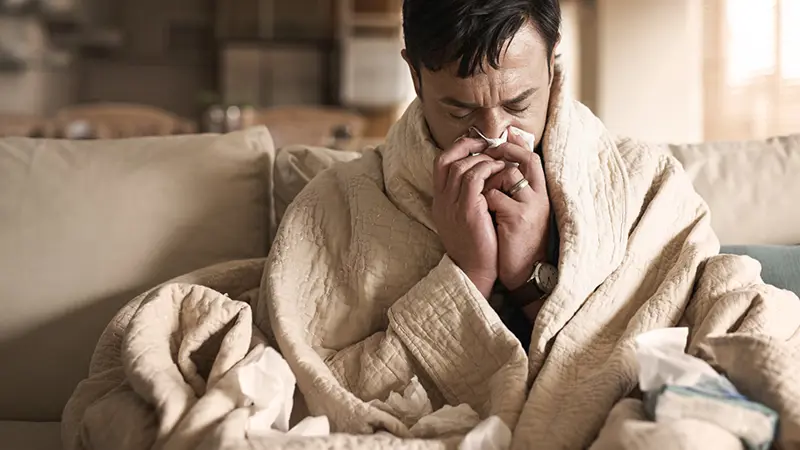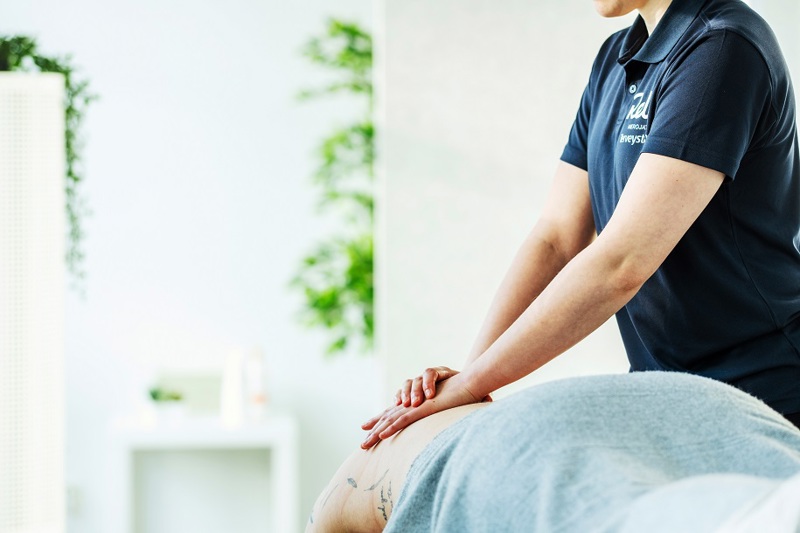Flu season has begun: 7 tips how doctors prevent the flu
The common cold is prevalent in Finland throughout the year. However, viruses spread more readily in the fall, and the influenza season typically begins at the end of the year.

− Healthy adults get the flu several times a year. For children, it is quite normal for those under the age of three to get the flu eight times a year, with the illness lasting a week or even two, says Emilia Lagus, a general practitioner at Terveystalo.
A vaccine has been developed to protect against the influenza virus, but hundreds of different viruses cause the common cold.
− New viruses and those that the body has not encountered in a long time are more likely to cause colds in adults as well, Lagus continues.
Seven tips from a doctor for preventing the flu
It is difficult to avoid the flu completely, as some viruses are contagious even before symptoms appear and some remain contagious long after. Other viruses can also remain on surfaces, such as door handles.
− The only way to truly prevent the flu is to completely isolate yourself, which is practically impossible, Lagus points out.
So is there any way to protect yourself from the flu? Could taking vitamins help, for example?
− There is no convincing scientific evidence that vitamin supplements can prevent the flu. If you are not deficient in vitamins, taking them from a bottle is rarely of much help. Of course, there is probably no harm in taking vitamin C and zinc, as long as you follow the recommended dosage instructions. There is some conflicting evidence that zinc supplements may shorten the duration of the flu, but they do not prevent infection, Lagus points out.
Instead of vitamin supplements, Lagus would focus on the following:
1. Taking care of your basic fitness
− You can support your body's own defenses by getting enough sleep and exercising in a way that suits you. You can get enough vitamins and other nutrients that maintain your defenses by eating a varied diet and following the plate model. Your plate should contain lots of different colored vegetables, berries, and fruits. Vitamin D is the only supplement worth taking in Finland, Lagus explains.
2. Stress management
− Short-term stress temporarily improves resistance, but long-term stress has the opposite effect. Stress alters the functioning of the body's immune system and makes the body more susceptible to various germs.
3. Avoiding smoking
Smoking weakens the body's defenses and irritates the mucous membranes of the respiratory tract, making them more susceptible to viruses that cause infections. Smoking therefore makes you more susceptible to the flu, Lagus points out.
4. Frequent hand washing
− Washing your hands is definitely the most effective way to prevent the spread of flu viruses, as the virus is most often transmitted through contact. During peak season, you should always wash your hands when coming in from outside, after using the toilet, before and after eating, and after blowing your nose, for example.
5. Change towels more often
− During periods of high infection rates, it is particularly important to change hand towels more often than usual. If you have a family, it is best if each family member has their own towel. This reduces the risk of infection within the family.
6. Spending time outdoors
− Spending time outdoors in nature strengthens your immune system. The exact reason for this is unknown, but it may be related to exposure to a diverse range of bacteria in nature, vitamin D intake, exercise in general, and social relationships.
7. The correct way to cough, sneeze, and blow your nose
− Knowing how to blow your nose and sneeze correctly also helps prevent the spread of disease. In Finland, techniques for reducing the spread of viruses were studied after the coronavirus outbreak, for example. According to the studies, the best way to sneeze is into a tissue, which should then be thrown away and your hands washed. If you don't have a tissue, you should sneeze into the collar of your shirt. This stopped the virus from spreading into the environment more effectively than, for example, sneezing into your sleeve, Lagus points out.
Read more occupational health articles

Terveystalo's digital services have been awarded the internationally recognized ISO27001 information security certification.
Terveystalo's information security practices, processes, and risk management are in line with international best practices.

Does massage help relieve stress? – Touch restores and calms the body and mind
Stress is not always visible on the outside, but the body does show signs when the strain increases. According to Lassi Ylönen, a trained massage therapist at Terveystalo Rela, the body often communicates stress through subtle signs.

Circular economy and artificial intelligence boost performance and improve care
At the heart of sustainable healthcare, technology serves as a tool for improving both the quality of care and accountability. Terveystalo favors solutions that combine sustainability, cost-effectiveness, and medical expertise.

Psychologist: How to make Christmas a relaxed and personal celebration
For many, the anticipation of Christmas begins when cities are decked out in seasonal lights and the first chocolates, calendars, and gingerbread cookies appear on store shelves. Christmas carols ring out and the Tonttuparaati choir sings “Kiire jo on! Kiire jo on!” (Hurry up! Hurry up!). This warm and atmospheric celebration also brings other feelings to mind: how on earth can we get through all this without losing our joy and peace in the rush?

Terveystalo and Gosta Labs deepen their cooperation: the goal is to streamline work with a superior patient information system
Terveystalo is deepening its cooperation with Finnish health technology company Gosta Labs and investing €1 million in the company as a minority investor. The aim is to jointly develop artificial intelligence solutions that improve the quality of care and the efficiency of reception work as part of Terveystalo's new patient information system, Terveystalo Ella.

First aid preparedness in companies requires action and courage
First aid skills increase resilience, but a barometer survey of Finnish organizations' first aid capabilities published in October reveals that the number of trained personnel is alarmingly low.